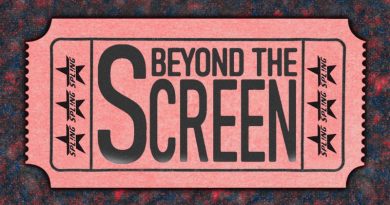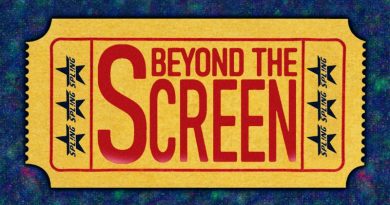Have Hollywood Movies got too Gimmicky?
George Lucas decided to wait until a time when visual effects technology had become good enough for him to release his first three Star Wars films. John Boorman decided to direct Arthurian legend, Excalibur, rather than tackle Lord of the Rings because he realised that the scope of the project would have been much too ambitious in order to realise many of J.R.R. Tolkien’s magical places and fantasy characters. Both directors were wise to avoid going out of their comfort zones, creating some iconic films as a result. Star Wars was already at the cutting edge in terms of visual effects, much of which still holds up by today’s rigorous standards.
The Evolution of Visual Effects
While make-up, animatronics and video effects of the day had their place, we’ve seen a marked improvement in visual effects, which have evolved even further with the rise of digital and 3D over the last three decades. While it appears that animals are still a bit tricky to pull off when you consider films like Dolittle and Mowgli, looking at Ang Lee’s tiger in Life of Pi, it seems to be more a case of just how much budget a film is willing to dedicate to each of its VFX elements. These days, with spectacular superhero and fantasy escapism bombarding the box office at regular intervals the need for visual effects has skyrocketed and while some budgets have grown in proportion to the demands, it’s still a case of filmmakers trying to get as much bang for their buck as possible.
Hiring numerous visual effects companies to unpack a slate of scenes and visual elements, it has now become a bidding war in an effort to keep costs down. With some of these films taking up visual effects in almost every frame it’s getting to the point where simple green screen technology is beginning to consume the actors themselves.
Boasting all-star casts and posting massive returns, the DC and Marvel Studios can’t seem to make films and TV series quick enough to keep up with the demand. While Disney seems to be pulling all the strings, having bought Lucasfilm and Marvel for an extraordinary amount, they do seem to be reaching a saturation point in terms of just how many Star Wars sequels and spin-offs can exist concurrently.
Hollywood Movies Too Gimmicky
Comic books were born in times when life was tough allowing readers to escape from their seemingly powerless situations into a realm of make-believe where superhuman abilities made immersing oneself both empowering and exhilarating. With the seemingly precarious political situation across the world and a latent recession undermining economies and job markets, it does seem like people would want to escape rather than confront their hard realities in the form of documentaries and dramas.
While Roland Emmerich and studios like Marvel are leading the charge when it comes to these feasts for the eyes, it’s getting to a point where visual effects have proliferated storytelling so much that it almost comes across as animation with superimposed actors. This unreal quality can derail film, taking it from the grit of suspenseful reality to a fabricated world of unreal. While the visual effects are possibly going too far, building sprawling worlds yet dampening the overall illusion in terms of quality, other films are trying to find the right balance.
Make That Single Shot Count
Following Birdman comes 1917, an experiential war adventure drama about two soldiers who are handed an impossible mission to go beyond enemy lines in a bid to rescue 1,600 men. Birdman simulated a continuous one-shot, cleverly editing it in such a way that it seemed as that was done in one take. Revolutionary, it has inspired other filmmakers to try and match this film-making feat. The most recent technical masterpiece is 1917, which tracks with its co-leads across the pastures and dilapidated buildings of France.
Artfully composed, undulating and epic, it’s an amazing achievement for world-renowned cinematographer Roger Deakins. While the meticulous planning and perfect execution of essentially many continuous shots are stitched together, it does give you a vicarious bystander experience of sorts. This roving single perspective camera movement is much like third-person video games with the exception that it’s continually looking for the best angle and frame in order to sustain its artistic temperament and visual standards.
Respect the Human Element
While the world of gaming and film are gradually converging, the stylistic choice does refocus what’s important in a film, once again taking away from the human element. There’s nothing wrong with aiming to do something like this but there are certain risks involved. One thing that’s becoming self-evident is that you buffer the human connection, the emotional undercurrent and the audience identification with the characters. By giving precedence to the visual effects or cinematography something is lost in translation, taking away from the actual art of performance. The same is true for resurrected digital characters who appear real but are synthetic recreations.
While Hitchcock infamously described his acting talent as cattle, films would be dead or at least alienating without a human presence or similar contact points in order to help immerse and persuade an audience into sinking into that world. While technical gimmicks are dazzling, impressive and carefully calibrated, keeping the vulnerable, flawed kernel of human nature seems to be essential in conveying rich and universal themes to speak to film audiences.
Film is difficult, requiring so much planning and forethought extending to budget allocation and human resources. It just seems that striking the right balance is a way that films will be able to retain their spectacular visual dimension without losing touch with characters. While world-building is important, it’s much more critical that character and story be revered and all of its talent respected. After all, you can hold an audience’s attention without all the gimmicks – it’s the story and characters that matter the most.




